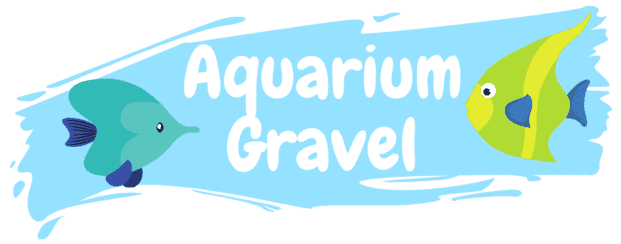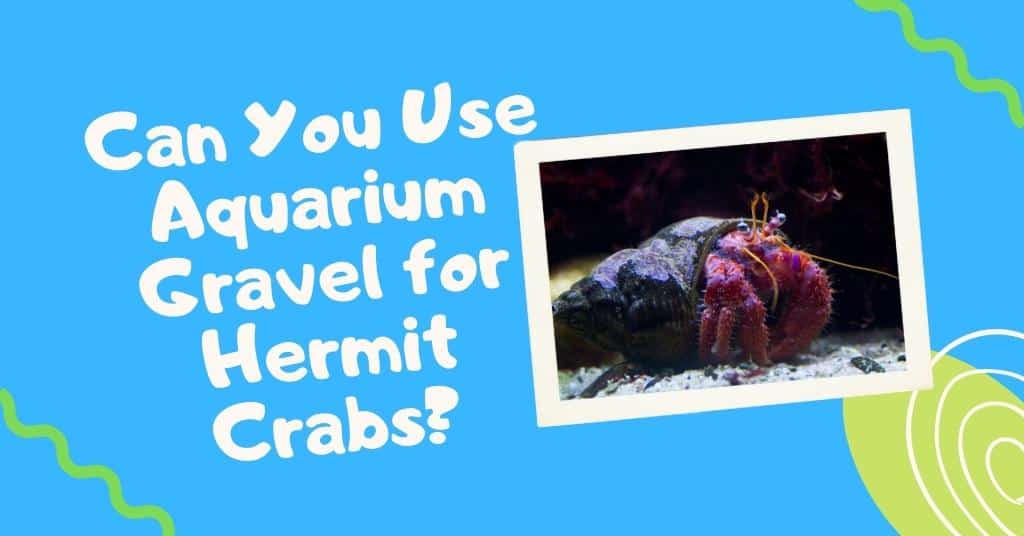Last Updated on December 16, 2021 by cmoarz
Setting up a new Hermit Crab enclosure? It’s important to know exactly what substrate you need to keep them happy, and healthy. Is aquarium gravel safe for hermit crabs? And if so, What kind should you be using?

Note: This article will discuss both aquatic and land-type hermit crabs. It’s important you know the difference and provide a suitable habitat for your hermit. Both need access to water!
The answer is No! Weather you have a terrestrial hermit crab or an aquatic hermit crab, You shouldn’t use traditional aquarium gravel as their tank substrate.
Here’s why:
Larger more coarse substrates such as gravel and pebbles make it hard for the hermit to dig. These bigger pieces of gravel may also pose a risk of getting stuck in their shells.
Additionally, these types of substrates don’t hold enough moisture and don’t regulate humidity. These factors are extremely important if you own a land hermit crab.
In fact, Some substrates will actually pull moisture out of your crab which will lead to death. These include things like corn or soy-based substrates, most wood (pine, cedar shavings, and sawdust, etc.)
The same goes for river pebbles, mud, clay, or potting soil. You should not use any of these as a substrate for your hermit crab.
Instead, you should use a substrate that is specifically designed for hermit crabs. This will help them feel comfortable, and prevent any potential health issues.

What kind of gravel do hermit crabs need?
Table of Contents
What substrate is good for hermit crabs? For aquatic hermits, You should be using a fine sand substrate at the bottom of your aquarium.
For land-based hermits, You should be using (natural) sand, Leaf litter, or coco fiber.
It’s better to use a mix of all of the above to create the ideal environment for your hermit crab.
Crushed coral has also been used by many successful hermit crab owners as a substrate.
You can also find many pre-mixed substrates for hermit crabs. These will often contain the sand, leaf litter, and coco fiber we mentioned above.
They can cost a bit more than mixing your own, but it can be nice to not have to worry about the process.
Check some out here:
Word of caution when purchasing “made for hermits” substrate. While the label may say it’s safe, certain substrates such as Calci sand should be avoided as once wet it turns into cement.
It could harden on your craps skin itself, or trap them beneath the surface, killing them quickly.
You should only purchase natural substrates. If it’s dyed or colored it’s probably not good for use with a hermit crab.
Remember, when in doubt, always consult with your veterinarian or an experienced hermit crab owner.
They will be able to help you create the perfect habitat for your hermit and ensure they live a long and healthy life!

How Deep Should Hermit Crab Substrate Be?
In order for a hermit crab to enjoy its like and the enclosure to be as natural as possible, deeper is always going to be better.
But as a general rule, you want your substrate to be at least 3 to 4 inches deep. This will allow your hermit crab to dig and create the tunnels and chambers they love to chill in.
If your substrate is too shallow, your hermit crab may become stressed and not thrive in their environment. If they are unable to bury themselves, they may feel vulnerable.
You can always go deeper if you want, but make sure to keep an eye on your hermit’s health and whether or not they are digging. If they’re not, you may need to add extra substrate.
About
Owner of AquariumGravel.com and also owner of actual Aquarium Gravel believe it or not! ;). Setting up beautiful aquarium sceneries and habitats since I was very young. Enjoy!
- Web |
- More Posts(290)

